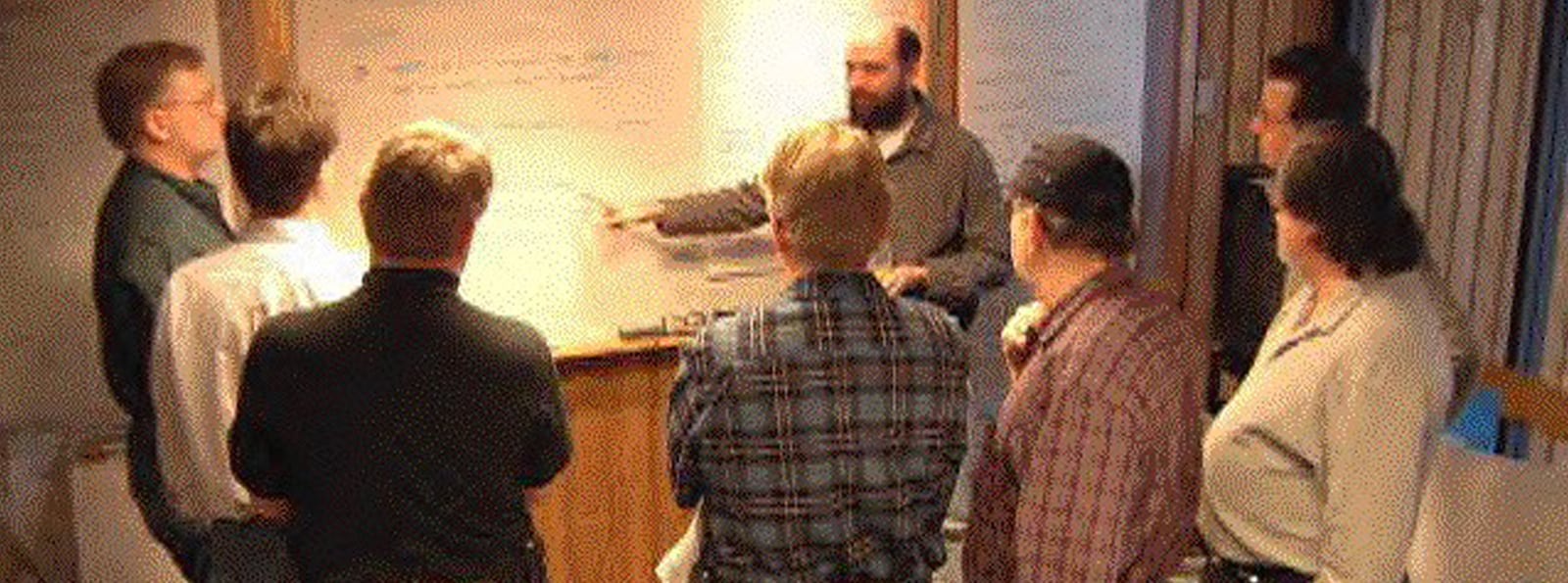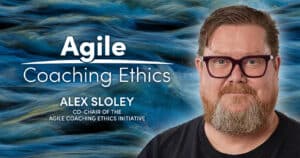Is Agile still Agile? That was an interesting topic for a panel discussion at Agile Europe in Gdansk in June. A great discussion ensued with a panel that included Ray Arell (formerly Intel), Hendrik Esser (Ericsson), Steve Holyer (independent Agile coach), Todd Little (IHS), and myself. In part 1 of this article, I reviewed one huge conclusion: Perhaps the most important thing in Agile is not explicitly mentioned in the Agile Manifesto: The Agile mindset.
In this second part, the discussion moves on to the evolution of Agile and the Manifesto itself. Should we be updating the Agile Manifesto itself?

Agile is Evolving
Steve Denning: I know it’s sacrilege to suggest any flaws in the Agile Manifesto, but it’s obvious that the Manifesto has gaps (e.g. why only software?) Yet I’m not suggesting that we fill those gaps or fix any flaws. I see the Agile Manifesto as a historic document, like the Magna Carta in England in 1215 or the American Declaration of Independence in 1776. There’s no point in going back and rewriting Magna Carta or the U.S. Declaration of Independence. They are historical documents that were valid for their particular moments in time. But the world has moved on. Magna Carta and the Declaration of Independence are inspiring documents, but we are not limited to what is in them for our notions of freedom or independence. We recognize them as historical landmarks but we don’t try to re-write them. We refer to them, we celebrate them and we move on.
We need to recognize that the Agile mindset is central to Agile even though it isn’t explicitly mentioned in the Agile Manifesto. We can read it implicitly in the statement that people and interactions are valued more than tools and processes.
We can see the historical importance of the Manifesto while also recognizing that an explicit commitment to an Agile mindset would today be more helpful than an implicit one. So it’s not enough to be able to recite the words of the Agile Manifesto or implement its practices and principles. There are some key elements of the Agile mindset that are simply not in the Manifesto, including the notion that the four values and 12 principles of the Agile Manifesto are held together by a common way of understanding and interacting with the world. And we are still discovering new things about the Agile mindset—such as how to communicate it and instill it in new audiences, particularly managers who have been entrenched for years in the habits of command-and-control and bureaucratic management practices.
I believe that we should recognize the Agile Manifesto, celebrate it as a landmark in the history of management, refer to it, and build on it, but not necessarily be limited by the particular language or ideas in it. Nor should we feel any obligation to re-write it.
Steve Holyer: The Agile movement started 15 years ago and that seems like a long time. But really the Agile movement is just entering the phase of being a teenager, which is a dangerous age. Agile is not mature yet. There is still a lot to discover. We’re still learning how to become Agile. When I hear people talk about going “beyond Agile” and look for the next new thing, what they really mean is that they want to do Agile like we meant in the first place.
Todd Little: You have to keep in mind that Agile Manifesto was really driven by a developer-centric view of the world. It was like: “We’re being persecuted! We’re having a revolution! Get away from us! Just let us do our work!” Right?
“Just tell us what you want and we’ll go do it. Let’s put a barrier up to keep those other people out. Let’s abstract ourselves away from the business, even though we’re going to collaborate with them.” There was some of that going on. And on the other side, there was also: “Those testers are causing problems too and we don’t want them in here either.”
We saw over time the evolution of the Agile community. In the early days, the testers got on board pretty quickly. The testers said, “Actually, we’re good testers. We want to be Agile and work with you developers.” That helped and the transition happened quickly: within one or two years, the test community came in and became actively engaged in transitioning to Agile.
The next group that had been left on the outside was the project managers. What role did they play in Agile? Initially, they were just seen as barriers. But the project managers got on board fairly quickly too. Scrum provided a constructive role for what project managers might do.
Making The Whole Organization Agile
Little: The part that has taken a really long time to evolve has been the connection of Agile to product management and the connection to the business. How do we really collaborate appropriately and meet the needs of our customers, and handle the challenges there? That has taken the longest time. And it’s still evolving.
Denning: One reason why that has been so slow is that the organization has often been focused on a different goal. While the software developers in Agile were driven by building great software that would delight customers, the organization as a whole was often focused on extracting value for shareholders. Organizations have often forgotten Peter Drucker’s insight of 1954 that the only valid purpose of a commercial firm is to create a customer. As recently as April 2016, The Economist called maximizing shareholder value, ”the biggest idea in the business,” even though Jack Welch has called it “the dumbest idea in the world.” Maximizing shareholder value is still pervasive in business thinking. So it’s hardly surprising that it is taking much longer for the whole organization to become Agile.
Little: Organizations have fundamental challenges with portfolio management. My view is if you get your portfolio and your strategy sorted out, and have an Agile mindset, everything else flows and amazing things happen. But getting to that point is not easy. And changing the Manifesto isn’t going to fix it. You’ve just got to learn to be Agile and live Agile, not just do Agile from time to time.
Agile Beyond Software
Hendrik Esser: When we began our Agile transition in 2008, the biggest problem was how to scale Agile and there are still a lot of people running round saying that this is still our biggest problem. This is not what I see is needed. What we really need the kinds of practices and tools that are already available for software developers. Software development teams have the Scrum process. With the help of a coach you can learn about acquiring the Agile mindset. There are two elements: the process and the coach.
But if you are working in finance or in human resources or in product management or marketing, what kind of help do you have? Can you find a knowledgeable coach who will help you? Are there any established processes? That’s where we are struggling at the moment.
Ray Arell: I want to do a yes-and. The Agile Manifesto has an explicit focus on software development. I broke copyright and put the word “product” in its place. Agile is often seen as something that the software people do. Or it’s seen as an IT thing. But we have implemented Agile in many areas that don’t have anything to do with software. It works in many different areas and it’s the mindset that does it.
Esser: At least the core of Agile is unchanged. What you do out of this is applied Agile. There you can see it is very alive and evolving. Agile is moving beyond the research and development. It’s starting to affect other parts of our companies. The problem is that we have not yet fully figured out how to do this.
Origins of the Agile Manifesto
Arell: If you look at the original people who were there in the room at Snowbird where the Agile Manifesto was written in 2001, they were software engineers. So what comes across are the great values and the things that we need to build great software, but they didn’t have an organizational mindset in the room.
When we see the word “empowerment,” what does that actually mean? How do I as a director at Intel transfer that to others, when the hierarchy in the organization is often getting in the way of that? Is Agile “what those people do” or is Agile: “what we do”?
So if you look at the principles of the Agile Manifesto and how we should be functioning as an organization, I don’t think the Manifesto goes into enough depth. There’s a company in Germany called Improuv and they have a motto that they put on their bag: “Treat people like adults.” In other words, treat people with respect and make sure that you don’t give them permission to not be an adult. I’d like see more of that mindset coming through.
The Multi-Cultural Dimension of Agile
Arell: And some of the words look different through the eyes of people in China or India. The words don’t mean the same thing. Even a word like “simple” can be misinterpreted. In a sense, “killing requirements early” sounds good here in the West, but the words represent a very Western-centric view of things. If we could deal with issues like that, it would be more of a world document.
What is Agile in Poland or elsewhere in Europe or in India? Is it the same or different? I had an interesting encounter with a manager in India who was being asked to become a coach. He wanted to become a coach. But he was worried because being a manager in India is a big deal, whereas being a coach isn’t. So how could he face his mother-in-law if he wasn’t a manager anymore? Here was I as a Westerner not understanding the cultural side of things. When we say “the Agile mindset,” it has many dimensions.
I used to have an office that looked out on people coming into the building. I would watch as they came in. As they put on their badge, their face would change. What they were as human beings on the outside was completely different from what they were inside the firm. Inside the firm, we had these things called “ARs” (action required) and managers would go around issuing ARs. Now you can’t get away with that kind of stuff at home: “Say honey, I’m issuing you an AR.” In the social world, it just doesn’t work that way.
A lot of the things in Agile are things that I want in my personal life. But I also have to shut down a lot of those things when we go into those buildings and put on a lot of those pretend-things that we do in organizations. We need to bring in more of the social dimension. We need to bring more of ourselves to work.
A Family of Management Practices
Denning: In reality, there’s quite a bit of variation, even within true Agile. In the site visits of the Learning Consortium, we saw people using different terms and different practices. Some of the most advanced firms would say, “We don’t think of ourselves as Agile,” even though to us, as visitors, what they were doing looked absolutely like genuine Agile.
In all these firms with advanced Agile implementations, there was an inner core of Agile. There was a family resemblance among the practices in the different organizations. There were no individual characteristics that were common to every single one of those organizations, and yet there was a family resemblance among them. They all looked truly “Agile” even though there were slight differences between them.
You could tell immediately if they had the Agile mindset, even if they were using different terms or different practices like Kanban or Scrum or XP or Lean or whatever. We would all conclude, “This place is really Agile.” So you can’t specify five characteristics that every Agile firm must have. It’s like brothers and sisters: they look a little bit different, but they are recognizably from the same family. You can see that there is a strong family resemblance among firms that are truly Agile. (The philosopher, Ludwig Wittgenstein, pointed out that although there are no common characteristics that every single game has, we all know instinctively what is, and what isn’t, a game. It’s the same with Agile. We know it when we see it.)
So we shouldn’t be pushing for complete homogeneity. In our site visits for instance, we didn’t see a large number of external coaches and trainers in the successful Agile implementations. What we saw mostly were people within the organization that were playing the role of coaches and trainers. They had internalized Agile. So we shouldn’t be using the number of external coaches and trainers as a measure of Agile. We should be asking: Is this organization really “imbued with the Agile mindset.” Are the leaders inspiring great teams? Are the teams fully engaged and even passionate? Are the customers at the center of everything and being delighted by what is being done? Does HR and Finance get it or are they just going through the motions of processes and systems and methodologies?
Esser: I have seen religious wars in Agile and in Scrum: “My Agile is more Agile than your Agile” and so on. Maybe it’s impossible to be totally aligned on the Agile mindset, and maybe it’s good that it’s impossible. We can’t be thinking exactly the same. The question is: does the Manifesto give us enough guidance to align us so that we can work in a common direction. For me, that’s’ what it achieves. There will be local interpretations. And we need to embrace this diversity and the discussions that come from that diversity.
Agile in Name Only
Arell: I’m going to disagree. There has to be a certain minimum of alignment around some common principles. There are teams that have steered so far off course that it no longer resembles anything we would recognize as Agile. I have a love-hate relationships with Scrum. If you misuse it and apply it with a traditional mindset, it can become a really great tool for micromanagement. “Every day, I get to ask you: what are you doing?” That language tends to creep in, especially when deadlines are not being met.
Holyer: Learning to delegate can be a good start, but it’s just a start. It’s not really self-organization or Agile. The manager still holds the control. The manager can choose when to delegate to you. And can choose when to take it back.
Instead of comparing my Agile to your Agile, ask: “Does this implementation of the Agile mindset meet the needs of this business—and not the dream of the external coaches and consultants.” Have we built the organization’s supports for the Agile that this organization needs?
Denning: One of the problems is that you have managers wandering around the organization with a picture of the firm in their mind as a pyramid of boxes. There’s a lot of things wrong with that picture, but one of the most important things is that the most important player—the customer—isn’t in the picture at all. Totally invisible. So long as that is the picture that managers have in their mind as to what is an organization you are always going to have a lot of wrong decisions.
Instead, we need to have managers with a very different picture engraved in their brains, a picture in which the customer is visible and at the center of the organization. And the managers and those doing the work need to have a clear line of sight to the customer for whom they are doing the work and can see how their work is adding value to that customer. And if it isn’t adding value, they need to be asking: “Why am I doing this work?” The boss is not the manager. It’s the customer who is the boss. The future of the organization depends on: is the firm going to be delivering continuous value in a way that the customer recognizes the value and is willing to pay for it?
Until people have that more accurate picture of what an organization looks like engraved in their brains, you are going to systematically have a lot of bad behavior occurring throughout organizations. They have a wrong mental model of how the world is working.
Is Agile Still Agile?
Denning: Getting back to the title of this session, I would ask: was Agile ever truly Agile in the first place? If you look back 20 years ago at some of the first Agile implementations, they don’t like the Agile implementations today at Intel or at Microsoft or Ericsson, where there are huge implementations involving thousands of people, operating in sync, delivering daily builds, or even more frequently than daily, and interacting with millions of people. In these cases, Agile is becoming increasingly the way the whole organization functions.
If you think back to some of those early implementations, it was one team working in the basement, and you were trying to protect that team from the management of the organization. It was something radically different.
Since then, Agile has grown. It has become more ambitious in a good sense. I know there is a lot of fake Agile around, but there are also some amazingly good large-scale Agile implementations. So my take is that it wasn’t so Agile in the first place, but over time, it is becoming more and more Agile.











